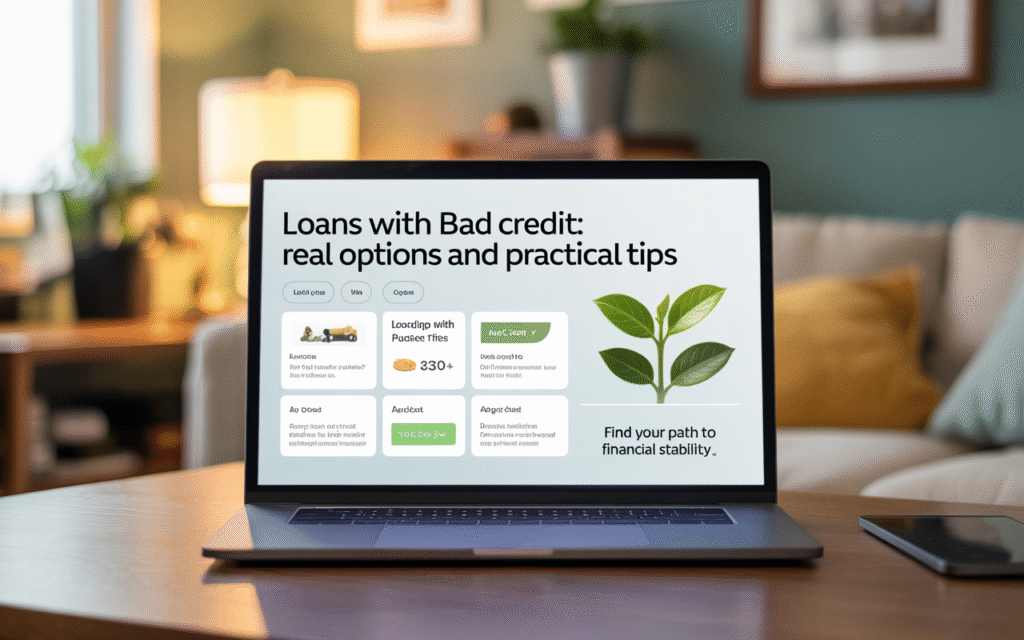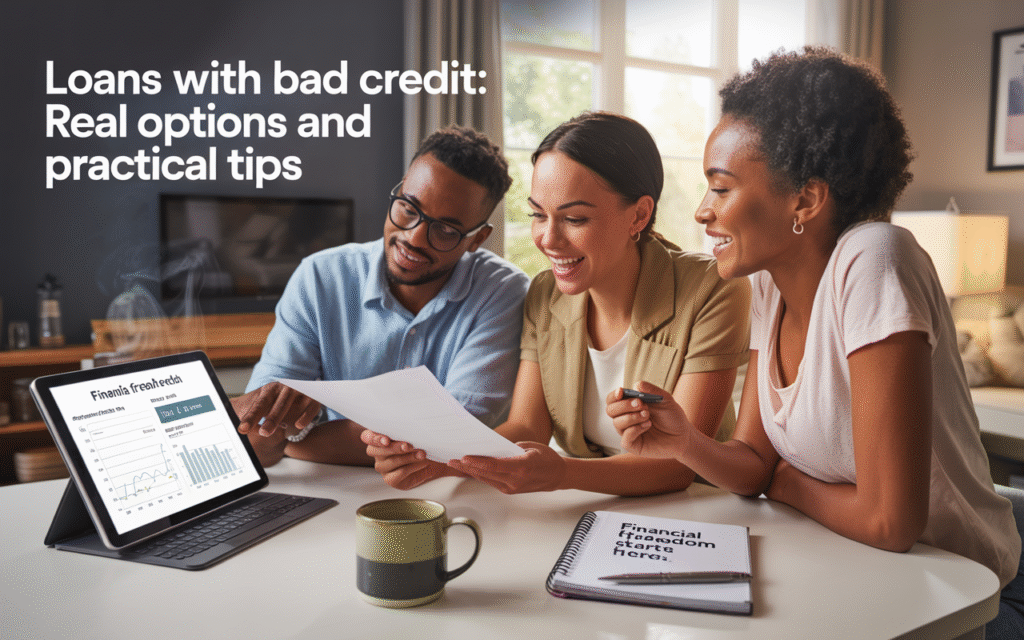
Look, I get it. Having a bad credit score feels like carrying around a giant, invisible sign that says “Risky borrower—proceed with caution.” It’s frustrating, embarrassing even. You just want a chance to get some financial breathing room without jumping through a million hoops—or worse, getting stuck with sky-high interest rates.
I’m not gonna lie: bad credit makes borrowing trickier. But not impossible. The truth is, plenty of folks have been in your shoes—maybe it was a medical emergency, job loss, or just a series of unfortunate financial decisions (hey, no judgment here). I’ve seen people claw their way back from credit scores in the 500s or worse, and it’s possible for you, too.
So before you give up or fall for some sketchy loan offer, let’s talk about what’s actually out there for people with less-than-perfect credit, and how you can navigate it without getting burned.
What Does “Bad Credit” Even Mean? Don’t Freak Out
First off, “bad credit” usually means your FICO score is under 600. Sometimes people call 600–650 “fair” or “okay,” but honestly, lenders see anything below 650 as risky.
But don’t freak out if your score is in that range or lower. It’s just a number. And it can be improved.
My cousin Michelle was stuck at 580 for a while because of some old credit card debt she couldn’t pay off after losing her job. She felt trapped. But with some smart moves (and patience), she got it up to 650 in about a year—and that opened up new loan opportunities.
Where Can You Get a Loan With Bad Credit?
Here’s the deal: traditional banks usually want to see a solid credit history. But there are other places where you can get a loan—even if your score isn’t great:
- Credit Unions: These smaller, member-owned institutions often have more flexible lending rules. Plus, they genuinely want to help their members. I have a friend, Carlos, who got a $3,000 personal loan from his credit union at a 12% interest rate, despite having a 590 credit score.
- Online Lenders for Bad Credit: Companies like Avant, Upstart, and LendingPoint specialize in loans for people with less-than-perfect credit. They tend to charge higher interest rates (think 20%–36%), but it’s often way better than payday loans.
- Peer-to-Peer Lending: Platforms like Prosper or LendingClub connect borrowers directly with investors. Sometimes, you can get better deals here than from traditional lenders, but you still need to qualify.
- Secured Loans: If you have something valuable—like a car or savings account—you can get a secured loan. The risk for the lender is lower, so they might offer you a better rate. Just be careful—if you can’t pay, you risk losing your collateral.
Ojo con las Estafas: No Te Dejes Engañar
The bad credit world is full of scams. The promise of “easy approval” and “no credit check” can lure you in, but watch out for:
- Upfront fees: Legit lenders don’t ask for money before giving you a loan.
- No physical address or contact info: If they hide behind a website and have no real way to reach them, run.
- Pushy sales tactics: If they’re rushing you to sign, it’s a red flag.
My buddy Jake once almost took a payday loan that said “No credit check, instant approval.” He told me later it had a 400% APR and the payments got out of control fast. Don’t make that mistake.
Tips to Improve Your Chances (And Your Credit)
Look, I’m not gonna sugarcoat it: having bad credit means you might pay more in interest. But there are ways to keep that cost down and maybe even improve your score along the way.
- Start small and pay on time. Even a $500 loan, paid off perfectly, can boost your score.
- Set up autopay. Lenders love this because it reduces missed payments. Bonus: some lenders even lower your rate a bit for it.
- Check your credit reports for errors. Sometimes mistakes drag your score down. You can get free reports once a year at annualcreditreport.com.
- Consider a co-signer. If you have a trusted family member with better credit, they can help you qualify for a better loan.

Real-Life Story: A Family’s Path Back to Financial Stability
Let me tell you about the Thompsons—a family of four living in Ohio. A couple of years ago, Mr. Thompson lost his job, and suddenly their credit tanked because bills piled up. They needed a loan to cover essential car repairs and groceries.
They tried banks but got turned down everywhere. Then they went to their local credit union and applied for a small personal loan. It wasn’t cheap—around 18% interest—but it was enough to keep the car running and get back on their feet.
Over the next year, they paid it back early and avoided any missed payments. Slowly, their credit scores climbed. Now, they qualify for better loans and even started saving for a family vacation.
This story is real because I know them, and the key takeaway is: there’s a path forward, even if it takes some time.
Helpful Resources Worth Checking Out
If you want some help learning how to handle bad credit, these resources really helped me and my friends:
- “The Total Money Makeover” by Dave Ramsey — A classic book that breaks down debt and credit in simple, practical steps.
- Credit Karma and Credit Sesame — Great free apps to track your credit score and get tips.
- National Foundation for Credit Counseling (NFCC) — They offer free or low-cost credit counseling if you’re feeling stuck.
To Wrap It Up: You’re Not Doomed, Promise
I want you to walk away from this knowing one thing:
Bad credit is not the end of the world. It’s just a rough patch, and like any rough patch, it can be fixed—with patience, knowledge, and the right moves.
It’s okay to feel overwhelmed. I get it. But the fact that you’re reading this means you care about your financial future—and that’s the first step.
So take a deep breath. Look around for the options that fit your situation. Don’t rush. Ask questions. Lean on people who’ve been there.
And remember—credit scores don’t define you. Your actions do.
You got this.
